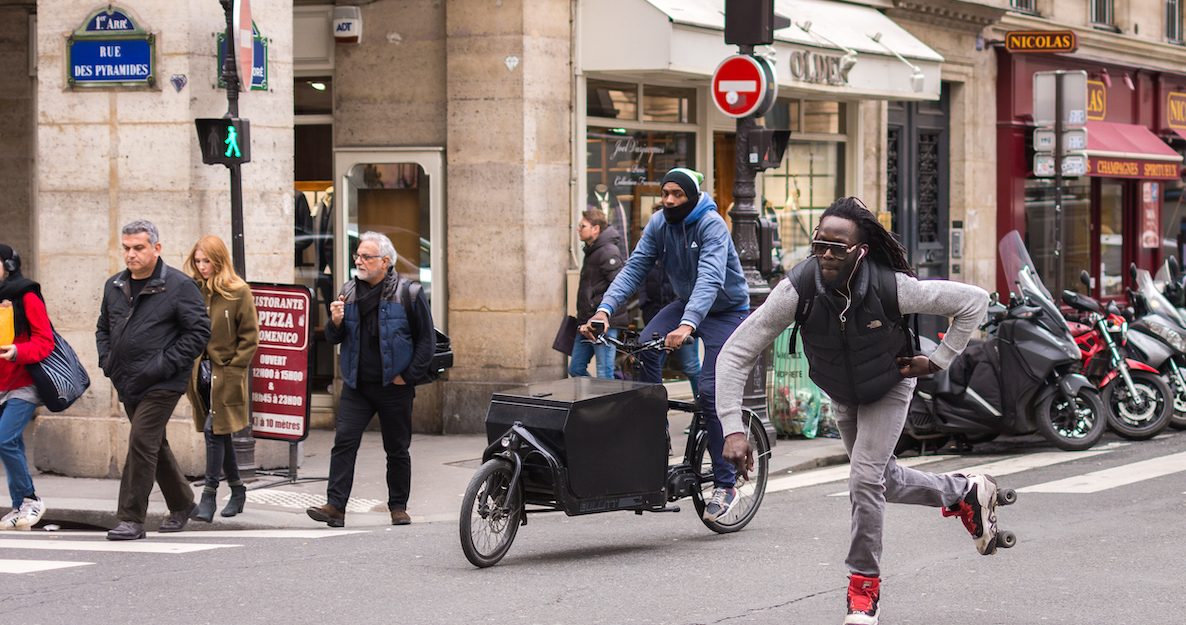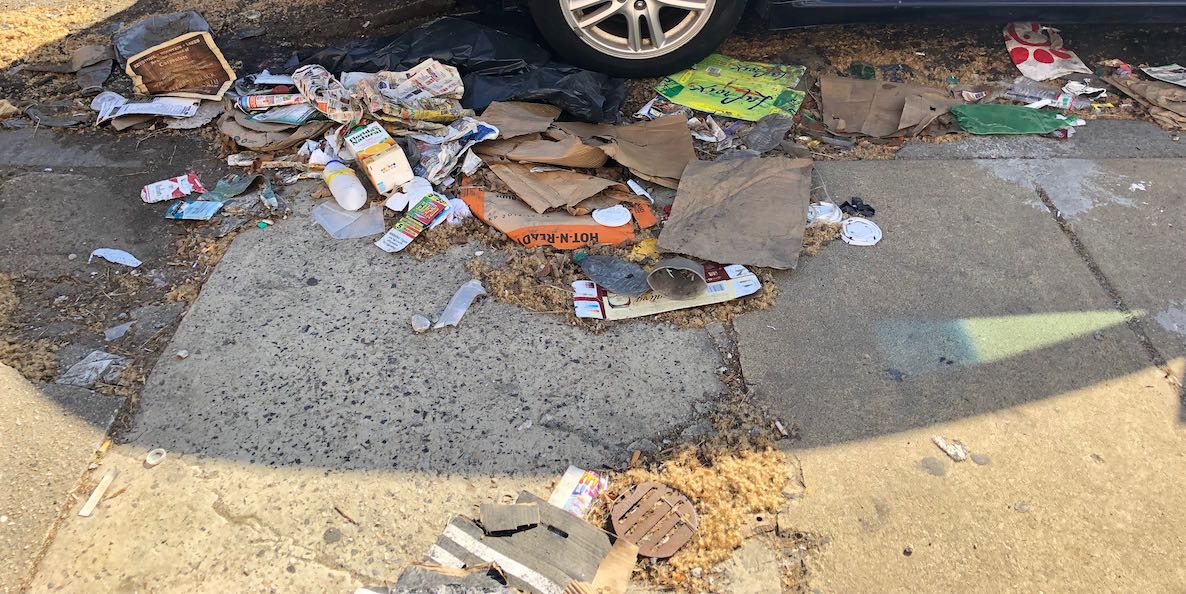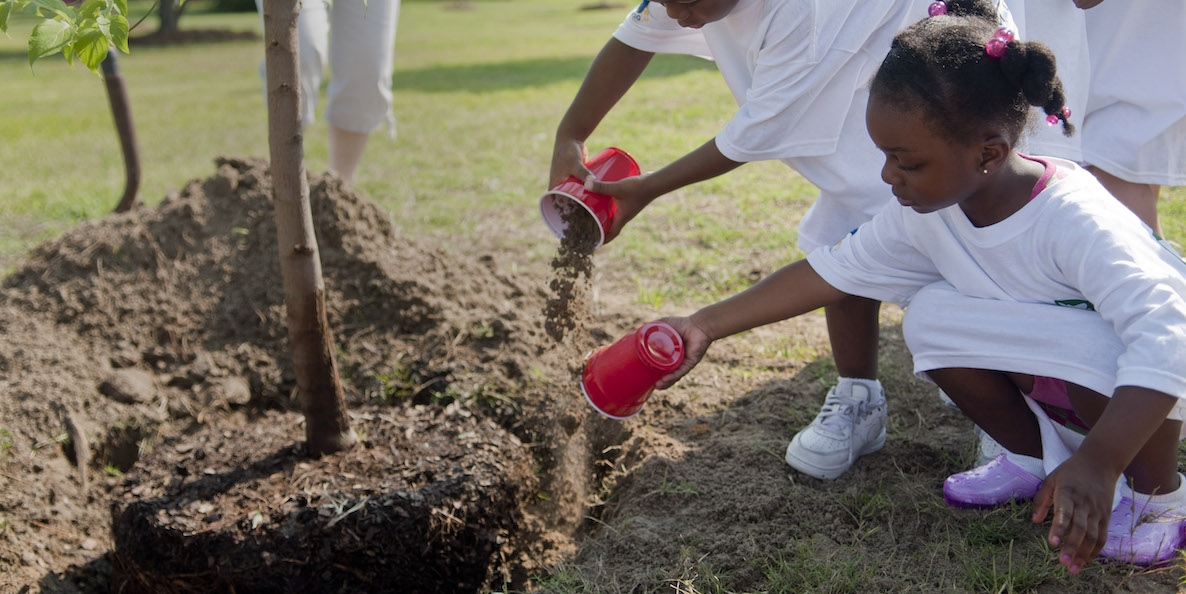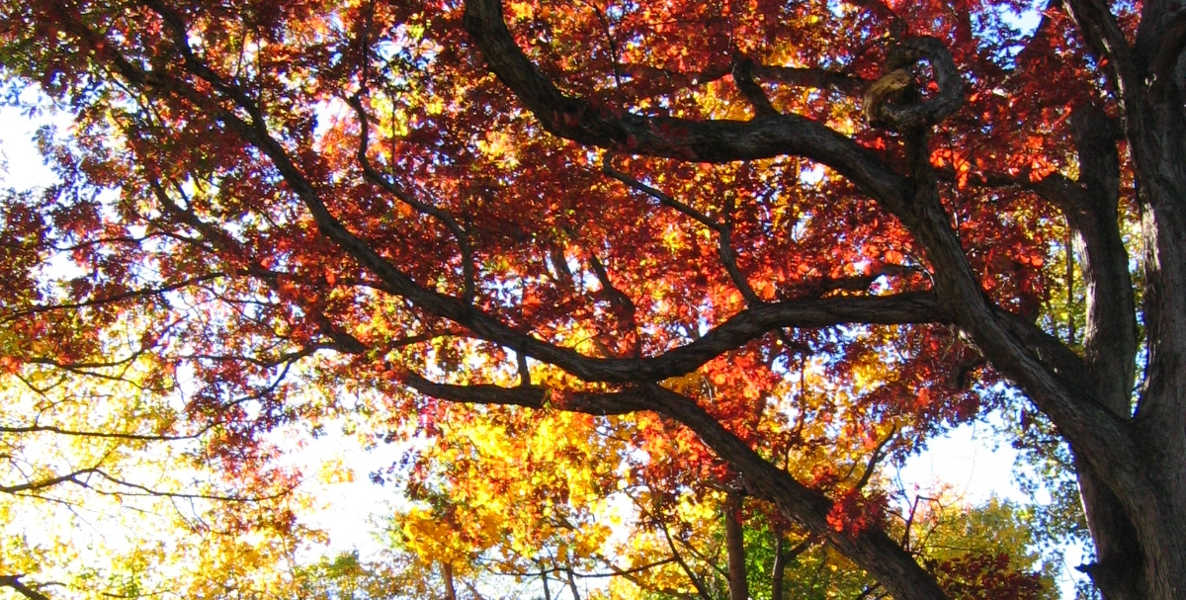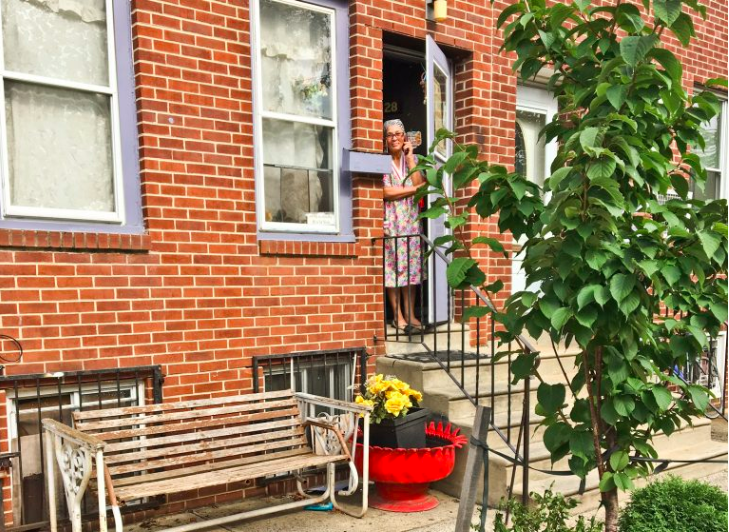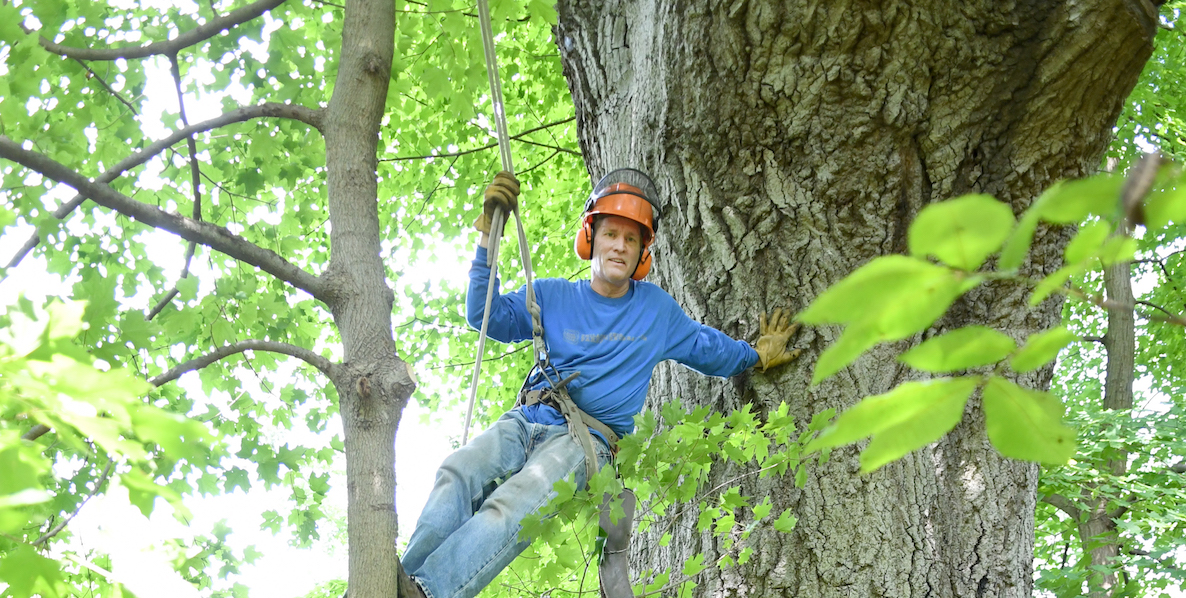Shortly after Nykia Perez Kibler and her family moved into their Kensington home in 2004, she did something that seemed both natural and necessary to her: She planted a tree.
It was a relatively small effort: she signed up for a tree through Pennsylvania Horticultural Society’s Tree Tenders, watered it lovingly for the first couple of years and then watched as it grew to three stories tall.

Prefer the audio version of this story? Listen to this article in CitizenCast below:

But that was only the beginning. In 2011, Perez Kibler and two neighbors launched Philly Tree People after meeting through a Tree Tenders training; Philly Tree People has since helped to plant around 1,600 trees provided by PHS in Kensington and Fishtown, and pruned and cared for a couple hundred more. They are getting set to launch a youth job ready program to train young people for green jobs and caring for their neighborhood’s plants. They host Tree Tender volunteer plantings twice a year that draw people from across the city, offer them food and beer—courtesy of nearby Philadelphia Brewing Company—and answer any and all questions about city trees: No, they don’t break pipes, especially if you keep them well-watered; yes, they collect litter, but only because the trunks stop trash from flying around; no, you can’t choose your variety of tree; no, it won’t cost you money.
“People might be surprised to find that we lose canopy,” says Erica Smith Fichman, Tree Philly program manager. “Think about what dies, and what is planted. Large trees die; small trees are planted.”
Their efforts have worked—to some extent. Perez Kibler says her corner of Kensington—a few blocks from Greensgrow Farm—is way greener than when she first moved there 10 years ago, with tree corridors growing on streets that didn’t used to have any green coverage at all. At the same time, progress has been slow: Some months after moving to a new home nearby, Perez Kibler walked by her old house to discover the new owners had cut down her beautiful big tree. And, even worse, old, large trees have fallen down in storms or for other reasons.
That is the sometimes painful reality of this work: It’s not enough to plant the trees. You have to keep planting the trees, and caring for them. “Tree planting has to become part of everybody’s culture,” Perez Kibler says. “You have to continue to do it, or this work won’t take.”
Perez Kibler, Jacelyn Blank and Dina Richman started Philly Tree People shortly after the last citywide assessment of tree coverage found a 20 percent overall “tree canopy” in Philadelphia—which means 20 percent of the city was covered in green, as seen from above. Mayor Nutter’s Greenworks plan in 2011 set a goal of a 30 percent tree canopy in every neighborhood, and overall, by 2025, which included a short-term goal of 320,000 new trees by 2015.
As part of that effort, the City launched TreePhilly to give free sidewalk and yard trees to building owners who applied for them and promised to care for them. Since 2011, the City has given away 23,000 trees; it has planted 4,500 on city streets in the last five years alone. The Pennsylvania Horticultural Society’s Tree Tenders program has trained volunteers to plant and care for trees, and several private groups—like Philly Tree People, Center City District and University City District—have jumped in to buy and plant trees in their neighborhoods as well. Still, even four years later, the city is far short of its initial 320,000 goal.
“It doesn’t matter how much money you have, and how big a house you have. Everyone can sit out on your stoop and enjoy the shade of a tree,” says Perez Kibler.
The City’s Department of Parks & Recreation is close to releasing the results of a new study of Philly’s tree canopy, which will lead to a reassessment of the work that still needs to be done. But the initial results might not be what you’d expect. “People might be surprised to find that we lose canopy,” says Erica Smith Fichman, TreePhilly program manager, who notes that a tree must be 8 feet tall to count as providing canopy. “Think about what dies, and what is planted. Large trees die; small trees are planted.”
![]()
Philly is not alone in this. Scientists with the U.S. Forest Service last year found that urban areas in America are losing around 36 million trees per year. This is bad news. Studies have shown that trees create benefits well beyond the aesthetic: The city’s nearly 3 million trees store about 2.5 million tons of carbon dioxide; remove over 500 tons of air pollution every year; and reduce residential energy costs by $7 million a year. Trees have been found to reduce temperatures by as much as 20 degrees, increase mental health and reduce crime. A big tree can hold thousands of gallons of water on its surface, helping to reduce flooding. And trees also raise property values: Houses on streets with a lot of trees see a 10 percent boost in their sales price.
But these benefits, as a recent Plan Philly article explained, are uneven: Poorer areas of Philadelphia have significantly fewer trees than more affluent areas, in part because trees beget trees. It is also a matter of education and outreach: TreePhilly has not made a concerted effort to encourage tree requests in areas of the city where there are fewer of them, like North Philly or Chinatown, for example.
Right now, Fichman says, the City has 920 people on its waiting list for trees. Some of that is seasonal—TreePhilly can only plant trees at certain times of the year, when they are available. And it means, Fichman says, that “more residents are recognizing the benefits of tree coverage to the health of their family, neighborhood, and city.” But there is also only funding for a certain number of trees per year. “The problem,” Fichman notes, “is not that we don’t have locations to plant. The problem is that we don’t have enough money to buy trees to plant.”
Last year, the City spent $378,500 on planting trees, with money from Parks & Rec, the Water Department and grants; this year, that number is almost double, at $725,000, largely because of an additional $250,000 grant from the state Department of Environmental Protection. PHS planted another 900 trees last year, using about 1,000 volunteers throughout the city. But it’s still not enough to do the job. For comparison: After New York City Mayor Mike Bloomberg announced in 2007 an effort to plant 1 million trees in 10 years, the Parks Department committed around $350 million to reach its goal. And it did—two years early.
How might Philly increase its tree canopy—or achieve any new goals that come from the latest tree study? Here are some ideas:
Dedicate more money to tree planting—something which would end up saving us money. A study of 10 megacities around the world from SUNY College of Environmental Science and Forestry calculated that for every dollar spent on planting, cities see an average of $2.25 in return, including savings of nearly $1 million in air pollution health care costs and $480,000 in energy costs per square kilometer. A Guardian article a few years back noted an even higher return on investment in New York City:
When the New York City park department measured the economic impact of its trees, the benefits added up to $120m a year. (Compare that to the $22m annual parks department expenditure.) There were $28m worth of energy savings, $5m worth of air quality improvements and $36m of costs avoided in mitigating storm water flooding.
Create a sustainable funding source for TreePhilly. This year’s tree planting budget is almost double last year’s. Next year? Who knows. Fichman says that consistent and continuous funding would allow Parks & Rec, like New York’s Parks Department, to partner with local nurseries years ahead to grow trees to the city’s specs: Types of trees, height, pruned as needed. This would give TreePhilly a more diverse selection of trees, chosen for optimal health and growth pattern, rather than being at the whim of the nursery industry; and it would better manage residents’ expectations as to when and what type of tree they would be getting.
Poorer areas of Philadelphia have significantly fewer trees than more affluent areas, in part because trees beget trees. It is also a matter of education and outreach.
Offer incentives for planting trees—perhaps a tax break for companies that plant and take care of trees outside their buildings, or a discount on a water or gas bill for residents who do the same. In particular, encourage landlords to plant trees in front of their rental units, as only homeowners can apply for a tree, one of the reasons high-rental neighborhoods have fewer of them. The money lost in revenue would be made up for in climate protection. (See above for savings attributed to planting trees.)
Better police development in the city. Developers of lots over 5,000 square feet are required to plant a certain number of street trees, or pay the city to do it for them. But that doesn’t address a different concern: The cutting down of old, large street trees in order to make room for construction—as happened with the long-needed development at Broad Street and Washington Avenue (where Sprouts opened) in the last year. Fichman says TreePhilly has no way right now to quantify the number of large trees cut down due to new buildings going up. That analysis, and a subsequent plan, will come out of the new tree canopy study.
![]()
Increase outreach to low-income and low-tree areas (often the same thing), to ensure they are starting to grow a tree canopy comparable to higher income ones, through better and more education—perhaps along the lines of the Water Department’s Drink Philly Tap. Fichman says so many homeowners have signed up for trees that TreePhilly hasn’t had a real need to target certain neighborhoods in order to meet its annual budget, but that this may be part of its new plan moving forward. That’s good because the geography and economics of Philly make these neighborhoods the most in need of trees: They have the highest levels of respiratory problems, air pollution, and heat—and the lowest ability to pay for air conditioning and other expensive remedies. They also have the highest level of apprehension and misinformation when it comes to trees—like the notion that trees will destroy pipes and cause crime.
Offer a carbon tax to offset the cost of tree planting, like they are piloting in Seattle and Austin, Texas.
Support the efforts already underway. Become a volunteer Tree Tender through the Pennsylvania Horticultural Society to help plant and care for Philly trees (trainings start next month). Donate to or volunteer with private groups that are doing this work—like Esperanza in North Philly, or Plant Center City, a joint project of the Center City District and philanthropists Richard and Laura Vague, to plant 200 trees in the next two years—or find or start a similar program in your own neighborhood, the way Perez Kibler and her friends did with Philly Tree People.
To Perez Kibler, as it should be for all of us, it was just a matter of doing the right thing to improve her neighborhood: She and her partners—all civically engaged urban nature lovers—learned that the only way to get more than 10 trees at a time is to form an organization to manage plantings. So they did.
“Once we start planting trees on a street, more people want one,” Perez Kibler says. “Sometimes they even go in on it together, to get a bunch of trees on one street. It doesn’t matter how much money you have, and how big a house you have. Everyone can sit out on your stoop and enjoy the shade of a tree.”
Photo by U.S. Air Force photo/Airman 1st Class Douglas Ellis


